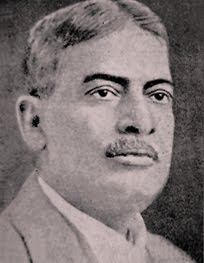
Man Who Almost Won India her First Nobel Prize in Medicine
Editor’s Note: A man could be seen spending many a nights over six years peering into a microscope, heating chemicals, mixing them, testing and going through sheaves of drug trials in a room lit by a single a kerosene lamp in the then Campbell Medical College, Kolkata . He had no army of research chemists to assist him, no water basin to wash hands, no modern equipment and no peer group to review his research. He had an even bigger handicap, no Indian till date had distinguished himself/herself in medical research, which was the domain of British doctors, chemist and pharmacists. This man was not aiming for academic stardom, his goal was more humble. He was aiming for finding cure to a disease which had killed millions of his countrymen. This man pulled off the impossible and synthesised a drug which for many years was mankind’s only answer to the dreaded disease Kalaazar. The man was Dr UN Brahmachari. Edward Jenner, who discovered the vaccine for small pox is said to have “saved more lives than the work of any other manâ€. We can safely say Dr UN Brahmachari saved more lives than the work of any other Indian.However unlike Edward Jenner who is a hero in Britain, Dr Brahmachari’s memory has been resigned to obscurity in India, a sad commentary on how India treats her scientists and men of letters.
The year was 1929, India then under British rule already had one Nobel Prize in her kitty- Rabindranath Tagore for literature (1913) and it was in serious contention for its second. Two members of the Swedish Academy – Hans Christian Jacobaeus and Göran Liljestrand from the Sweden’s Karolinska Academy were called in to assess a nomination from India for the Nobel Prize in Medicine. The nominee was Dr. UN Brahmachari and he was being considered for the top medicine prize in the world for his path breaking discovery of Urea Stibamine (an antimonial compound) for treatment of Kalaazar and a discovery of a new disease- post-Kalaazar dermal leishmanoid. The 1929 Nobel Prize however went to Christiaan Eijkman and Sir Frederick Gowland Hopkins for their work on vitamins.
While we are not equipped or qualified to question the Nobel committee decision, nor are the transcripts of the assessment of the Nobel committee available, we can surely say that Brahmachari would have been a strong contender for the prize, for he was the first to have found an effective cure for Kalaazhar, the second-largest parasitic killer in the world, after malaria.
While Ronald Ross got the Nobel Prize in 1902 for malarial research (done primarily in India), it would have been a natural corollary had the Swedish academy followed suit by recognizing Brahmachari’s work on Kalaazar. It was to take another forty years before an Indian (albeit holding an American citizenship), Hargobind Khurana, would get the medicine Nobel. Incidentally it is interesting to note that as soon as Ronald Ross had cracked the Malaria puzzle that mosquitoes transmit malaria, Ross then a doctor with the Indian Medical Service was transferred from Calcutta and ordered to report to a new post in Assam to do research on Kalaazar. The exasperated Ross had remarked “Columbus having sighted America was ordered off to discover the North Pole” The discovery of North Pole was however reserved for Brahmachari.
UN Brahmachari was born in 1875 in Jamalpur, Bihar, where his father Nilmony Brahmachari was a doctor with the East Indian Railway and was later appointed as the Municipal Commissioner of Jamalpur. His mother Sourav Sundari Devi was a home maker. Originally Mukhopadhyay, the family during the times of Chaitanya Mahaprabhu in the 15 century had taken the surname Brahmachari. The family had its ancestral roots in Sardanga village in Budhwan District, West Bengal.
The young Upendranath did his schooling from Eastern Railways Boys’ High School at Jamalpur. A brilliant student,Upendranath started out to become a mathematician, and passed his BA in mathematics in 1893 from the prestigious Hooghly College and was awarded the Thwaytes Gold Medal for topping the examination. It was then that Brahmachari decided to change tracks and joined the Presidency College Calcutta to pursue Masters in Chemistry from where he graduated in 1894. He again changed tracks and joined the Calcutta Medical College from where he obtained the Licentiate in Medicine and Surgery degree in 1899, Doctor of Medicine (MD) Degree in 1902 and PhD in Physiology in 1904 on physiochemical properties of Red Blood Cells. On the way he picked up the Goodeve and McLeod Medals for topping in Surgery and Medicine respectively. Such a phenomenal array of degrees was a rare phenomenon in those days,and probably is true even now. Brahmachari’s grounding in chemistry and medicine set the stage for the discovery of urea Stibamine an antimonial compound for treatment of Kalaazar which would go on to save millions of lives.
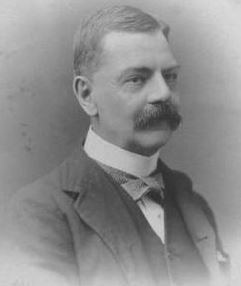
Brahmachari started his career as a doctor under Sir Gerald Bomford (1851-1915) in Calcutta. Bomford recognised Brahmachari’s talent and offered the then 27 year old Brahmachari a teaching position in Physiology in Dacca Medical School in November 1901. Probably without Bomford’s encouragement, Brahmachari might not have been a medical researcher, and taken the more remunerative career of a physician. Bomford went on to become the Director-General and Surgeon General of the Indian Medical Services He was also the Principal at Medical College Hospital, Calcutta, India.
After completing his studies, Brahmachari did a four year stint as faculty at the Dacca Medical College where he made his initial forays in medical research. Subsequently Brahmachari joined the faculty at Campbell Medical School (now the Neel Ratan Sircar College of Medicine), Kolkata in 1905 where he for next 20 years would relentlessly pursue the antidote for Kalaazar.
Kalaazar manifests as fever accompanied with black pigmentation and if not treated can be fatal. It first came to the attention of Western doctors in 1824 in Jessore, India (now Bangladesh), where it was initially thought to be a form of malaria. In 1870 the first reported outbreak of Kalaazar took place in Assam which spread to Bengal and Bihar. This and subsequent outbreaks claimed millions of lives. Many villages in Assam were completely depopulated.
It took sometime before medical science could get to the bottom of the disease aided by some of the most brilliant minds of those times. The parasite causing the disease was isolated in India in 1903 by William Leishman and Charles Donovan, British doctors working in India. The parasite specie was named after both of them— Leishmania donovani on suggestion of Sir Ronald Ross. The epidemiology and the Sand fly as the agent which spreads Kalaazar  was confirmed by experts working on the Indian Kalaazar Commission.
The initial treatment regimen for Kalaazar was Tartarmetric injections, which had low cure rate, 95% of the sufferers would perish! 1915 to 1920, Brahmachari worked with single-minded determination to discover a new drug to cure Kalaazar. He carried out his research work in a small ill equipped room in the Campbell Hospital which did not have even simple facilities like a gas burner, a water tap or an electric bulb. Brahmachari would work through the night under the light of the lantern, the fire within him to save lives of his countrymen kept his morale high.
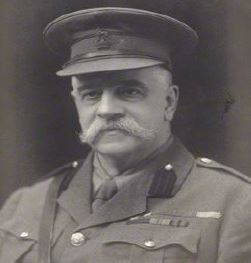
Colonel Sir Robert Neil Campbell (1854-1928) was the Superintendent of the Dhaka Medical School, where Brahmachari was the faculty. It was in collaboration with Campbell that Brahmachari started his medical research.
In 1919 he struck success when he discovered a potent agent against Kalaazar, which he named Urea Stibamine. It was the urea salt of para-aminophenyl stibnic acid. By 1923 injection of 1.5 gms of Urea Stibamine was the standard protocol for Kalaazar treatment and the mortality rate from the disease which was 95% , was brought down to 10% by 1925 and by 1936 it was 7%. The use of drug was not confined to India alone but  successfully adminisyered in Greece, France and China for many years.
Talking of his ill equipped Lab Brahmachari would later recollect “To me it will ever remain a place of pilgrimage where the first light of Urea Stibamine dawned upon my mindâ€.
Such was Brahmachari’s contribution that Sir John Kerr, the then Governor of Assam could not maintain the rather reticent demeanour of the British towards Indians when he remarked - “The progress in the campaign against Kalaazar in Assam has been phenomenally rapid. Dr. Brahmachari’s researches in the treatment of Kalaazar were one of the most outstanding contributions in tropical therapeutics, as a result of which three lakhs of human lives were saved in the Province of Assam alone during the course of ten years.â€
Brahmachari had two more outstanding contributions to his name. He was the first to identify a new disease now known after him - Brahmachari Leishmanoid. It is a cutaneous leishmaniasis which occurs in patients who have recovered from Kalaazar. Brahmachari was also responsible for establishing India’s first blood bank at the School of Tropical Medicine, Calcutta in 1935. Brahmachari was then the Chairman of Bengal Red Cross Society.
A Nobel Prize nomination, a fundamental drug discovery, a disease to his name and first blood bank establishment to his credit, probably no other Indian medical researcher has achieved so much. However unfortunately Dr Brahmachari’s legacy remains in oblivion, even his house on Cornwallis Street,Calcutta has been taken over by encroachers.
We at Probashi did a small survey involving twenty respondents from middle class income group in Delhi and Calcutta and asked them whether they knew who Dr UN Brahmachari was, and only 3 persons out of 20 could answer. Unfortunately India’s best medical researcher is not a part of the collective memory of Indians.
It is sad to note that no Indian medical college has been named after Dr UN Brahmachari. Will we be asking for too much if we suggest that All India Institute of Medical Sciences, the premier medical college in India, be named after Dr UN Brahmachari. If we can have hospitals named after politicians, one of India’s best medical researchers can also lay a legitimate claim. Or can he ….?


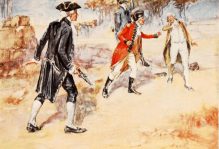
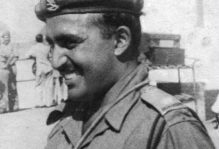
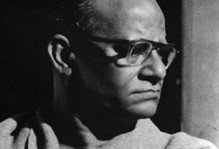

Quite informative and overall good quality article. It’s shame for us, the Indians, that we have got ‘heroes’ all wrong. Keep writing for our long-forgotten heroes.
very informative
I came upon this article while Googling for Stibnic acid. I admit that I too didn’t know anything about all of this.
No, expecting that Dr. Brahmachari would be honoured is too much, we worship everything ‘phoren’ and on top of that bowing to power is ingrained in us.
Amusingly, the only words which come to me at this time are inspired by the words of the American Secretary of War, when Lincoln passed away.
He belongs to the ages.
We should certainly learn about the people who have contributed to India’s growth .